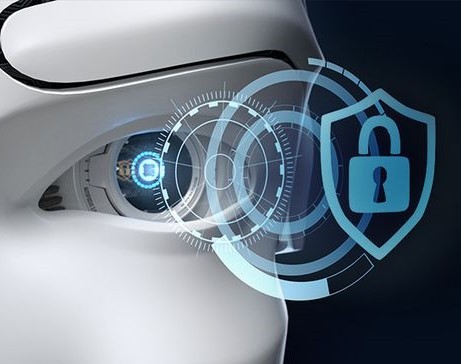
As the digital landscape becomes more complex and cyber threats grow in sophistication, organizations are turning to artificial intelligence (AI) to enhance their cybersecurity capabilities. The intersection of cybersecurity and AI presents both opportunities and challenges in defending against cyber threats. Let’s explore how AI is transforming cybersecurity and the considerations that come with it.
AI algorithms have the ability to analyze vast amounts of data, detect patterns, and identify anomalies that may indicate potential cyber threats. By leveraging machine learning and advanced analytics, AI can enhance threat detection capabilities, enabling organizations to identify and respond to threats more effectively. AI can analyze network traffic, user behavior, and system logs in real-time, detecting unusual activities and potential indicators of compromise.
AI can provide predictive analytics and risk assessment in cybersecurity. By analyzing historical data and patterns, AI algorithms can identify potential vulnerabilities and predict future cyber attacks. This enables organizations to proactively prioritize security measures, patch vulnerabilities, and allocate resources to areas most likely to be targeted. Predictive analytics helps organizations stay one step ahead of cyber threats, reducing the risk of successful attacks.
AI-powered automation can streamline incident response processes. AI algorithms can analyze and categorize security incidents, providing a faster and more accurate response. They can automatically trigger predefined actions, such as blocking malicious IP addresses, isolating compromised systems, or initiating threat containment measures. AI-powered automation reduces response time, minimizes human error, and allows security teams to focus on more complex tasks.
AI technologies, such as biometric authentication and behavioral analytics, can improve user authentication and access control. AI can analyze and learn user behavior patterns, identifying anomalies that may indicate unauthorized access attempts. It can also leverage biometric data, such as fingerprints or facial recognition, to provide more secure and convenient authentication methods. AI-powered authentication enhances identity verification and reduces the risk of unauthorized access.
While AI enhances cybersecurity, it also introduces new challenges. Adversarial AI refers to the use of AI techniques by cybercriminals to launch sophisticated attacks. Adversarial AI can be used to bypass traditional security measures, exploit vulnerabilities, or generate convincing phishing emails. Defending against adversarial AI requires continuous monitoring, robust AI algorithms, and advanced threat intelligence to stay ahead of evolving attack techniques.
AI in cybersecurity raises ethical considerations and potential biases. AI algorithms rely on training data, and if the training data is biased or incomplete, it can result in biased outcomes. Bias in AI can lead to discriminatory decisions, false positives or negatives, and unintended consequences. Organizations must ensure transparency, fairness, and accountability in AI systems, regularly auditing and evaluating the performance and impact of AI algorithms.
AI technology in cybersecurity requires skilled professionals to develop, deploy, and manage it effectively. Organizations need cybersecurity experts who understand AI and can work collaboratively with data scientists and AI specialists. Human expertise is crucial for interpreting AI-generated insights, contextualizing threat intelligence, and making critical decisions based on AI-generated recommendations.
The intersection of cybersecurity and AI presents immense potential for improving cyber defense capabilities. AI-powered threat detection, predictive analytics, automated incident response, and enhanced authentication can strengthen an organization’s cybersecurity posture. However, organizations must also consider the challenges posed by adversarial AI, ethical considerations, and the need for human expertise.
To effectively leverage AI in cybersecurity, organizations should engage with trusted technology partners, invest in ongoing training for cybersecurity professionals, and establish robust governance frameworks to ensure the responsible and ethical use of AI technologies.
If you need assistance in enhancing your cybersecurity posture or exploring AI-powered solutions, visit us at www.infradapt.com or call us at 484-546-2000. Our team of experts can provide insights, guidance, and support in harnessing the power of AI for cybersecurity.